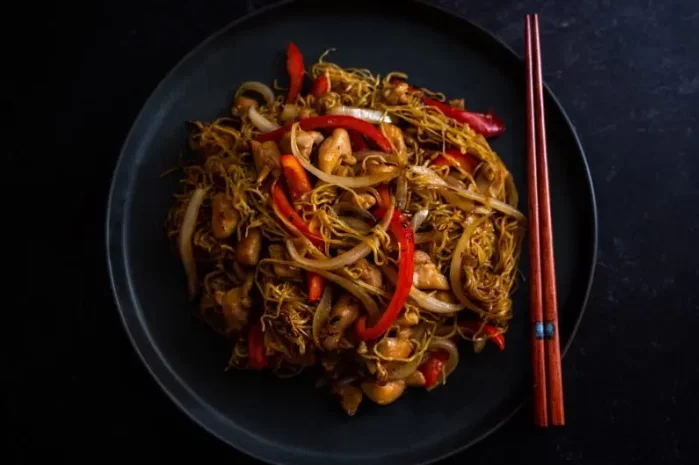Chinese noodles are a staple in many households, renowned for their versatility and ease of preparation. With a variety of types and cooking methods, knowing how long to cook Chinese noodles can be the key to perfecting your dishes. This article will guide you through the different types of Chinese noodles, the appropriate cooking methods, and tips for achieving the best results.
1. Introduction to Chinese Noodles
Chinese noodles come in several varieties, each with its own unique characteristics and uses in cooking. Here’s a brief overview:
Egg Noodles: Made from wheat flour, water, and eggs, these noodles have a yellow color and a slightly chewy texture. They are commonly used in stir-fries, soups, and chow mein dishes.
Rice Noodles: Made from rice flour and water, rice noodles are gluten-free and have a delicate texture. They are often used in soups like pho, stir-fries, and spring rolls.
Wheat Noodles: These noodles are made from wheat flour and water, sometimes with added salt or alkaline agents. Wheat noodles include varieties like lo mein and udon, known for their firm and elastic texture.
Each type of noodle has a specific cooking method and time that brings out its best qualities in various dishes.
SEE ALSO: What to Cook with Christmas Ham
2. Cooking Methods for Chinese Noodles
Boiling
Boiling is the most common method for cooking Chinese noodles. Here’s how to do it correctly:
Water-to-Noodle Ratio: Use a large pot of water to prevent the noodles from sticking together. A general rule is to use 4-6 quarts of water per pound of noodles.
Cooking Times: The cooking time varies depending on the type and thickness of the noodles. Below is a chart for reference:
Noodle Type Cooking Time (Minutes)
Egg Noodles 3-5
Rice Noodles (Thin) 3-4
Rice Noodles (Thick) 7-9
Wheat Noodles 8-10
Testing for Doneness: Use chopsticks or a fork to pull out a noodle and taste it. It should be tender but still firm (al dente). If it’s too chewy, give it another minute and test again.
Steaming
Steaming is less common but ideal for specific types of Chinese noodles, such as thin rice noodles used in dim sum.
Equipment and Time: Use a bamboo or metal steamer lined with parchment paper to prevent sticking. Place the noodles in the steamer and cover. Steam for about 8-10 minutes for fresh noodles or up to 15 minutes for thicker or dried varieties.
Stir-Frying
Stir-frying is a quick and flavorful method that’s perfect for egg noodles and wheat noodles.
Steps:
Pre-cook the noodles by boiling them until just underdone.
Drain and rinse them under cold water to stop the cooking process.
Heat a wok or large pan with oil.
Add the noodles and stir-fry over high heat, tossing frequently.
Tips for Stir-Frying:
Ensure the noodles are well-drained and slightly dry before stir-frying to prevent them from sticking.
Use a high smoke point oil like peanut or vegetable oil.
Toss the noodles gently to avoid breaking them.
3. Tips for Perfect Noodles
Achieving the perfect texture and flavor for Chinese noodles involves a few key tips:
Preventing Sticking: Stir the noodles occasionally during boiling to prevent them from clumping together. If you’re not using them immediately, toss them in a bit of oil after cooking.
Achieving the Desired Texture: For a firmer texture, reduce the boiling time by a minute or two. For softer noodles, extend the boiling time slightly. Always test before draining.
Storing Cooked Noodles: If you have leftovers, rinse the noodles under cold water, drain them thoroughly, and toss them in a little oil before storing them in an airtight container. They can be refrigerated for up to three days. To reheat, briefly blanch them in boiling water or stir-fry them directly.
4. Recipes and Examples
To put these cooking methods into practice, here are a few simple recipes:
Stir-Fried Egg Noodles with Vegetables
Ingredients:
200g egg noodles
1 carrot, julienned
1 bell pepper, sliced
2 cloves garlic, minced
2 tablespoons soy sauce
1 tablespoon oyster sauce
2 tablespoons oil
Instructions:
Boil the egg noodles for 3 minutes, then drain and rinse under cold water.
Heat oil in a wok and sauté the garlic until fragrant.
Add the vegetables and stir-fry for 2-3 minutes.
Add the noodles and sauces, and toss everything together for another 2 minutes. Serve hot.
Steamed Rice Noodles with Chicken
Ingredients:
200g rice noodles
200g chicken breast, sliced
2 tablespoons soy sauce
1 tablespoon sesame oil
1 teaspoon ginger, minced
Instructions:
Marinate the chicken in soy sauce, sesame oil, and ginger for 20 minutes.
Steam the rice noodles for 8 minutes until soft.
Stir-fry the marinated chicken until fully cooked.
Serve the steamed noodles with the chicken on top.
These recipes highlight the versatility of Chinese noodles and how the cooking method impacts the final dish.
Conclusion
Cooking Chinese noodles is an art that balances time, technique, and personal preference. Whether you’re boiling, steaming, or stir-frying, following theseguidelines will help you achieve the perfect texture and flavor for your dishes. With practice, you’ll be able to customize your noodles to suit any recipe or palate. Enjoy experimenting with different noodle types and cooking methods to create delicious, authentic Chinese meals at home.
Related Topics:
























